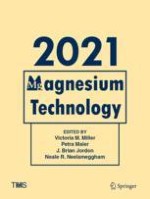2021 | OriginalPaper | Buchkapitel
On the Role of Crystallographic Anisotropy and Texture in Damage Tolerance of Magnesium and Its Alloys
verfasst von : Shahmeer Baweja, Padmeya P. Indurkar, Shailendra P. Joshi
Erschienen in: Magnesium Technology 2021
Aktivieren Sie unsere intelligente Suche, um passende Fachinhalte oder Patente zu finden.
Wählen Sie Textabschnitte aus um mit Künstlicher Intelligenz passenden Patente zu finden. powered by
Markieren Sie Textabschnitte, um KI-gestützt weitere passende Inhalte zu finden. powered by
